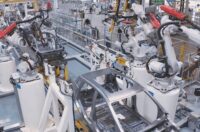Consumers want choice, which is one reason why there are so many different type of vehicles to choose from today. Interior and exterior design plays a key role. And, it will become even more important in the future, claims Henrik Fisker, CEO of Fisker Inc., a startup electric car company.
“We will see a design revolution as we move into [more electric vehicles] over the next five to seven years,” says Fisker. “We’re forced to sit people on top of a battery, which fundamentally changes the proportions of a vehicle. People sit higher up, there’s no engine out in the front and there’s no gas tank at the rear.”
Fisker made his remarks during the recent Reuters Automotive Summit, a virtual event that featured many top executives from the auto industry. “Because of electrification, design will become even more important in the future,” he explains. “The differentiator between brands will no longer be engine sounds or the smoothness of [transmissions].
“User interface will require more than just inserting a giant screen [on the dashboard],” argues Fisker. “We need to think about how people are entertained in an electric car. There will no longer be traditional sounds [emanating] from a mechanical device.
“Every EV can [accelerate] quickly, is quiet and runs smoothly,” says Fisker. “We’re thinking a lot about new things that haven’t really existed before in a vehicle to get people emotionally involved as they operate it.”
Fisker plans to produce four different electric vehicles by 2025. His first offering will be the Ocean SUV, which will have starting price under $40,000 and a driving range of more than 300 miles. Fisker claims it will be the world’s most sustainable vehicle. The aluminum-intensive vehicle will feature solar panels on its roof and interiors crafted from recycled materials.
“We are trying to build in a lot of sustainability, but it’s difficult to do,” notes Fisker. “We need automotive-grade materials. Just because you can make a handbag out of something doesn’t mean you can also make a car seat out of it that will last for 100,000 miles.”
The Ocean is scheduled to be produced in late 2022, but Fisker plans to outsource manufacturing. It will be assembled by contract manufacturer Magna Steyr at its factory in Graz, Austria. According to Magna International Inc., “the vehicle will leverage [our] EV architecture combined with the Fisker-Flexible Platform Adaptive Design (FF-PAD) to create a lightweight, aluminum-intensive platform.”







